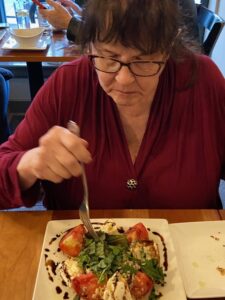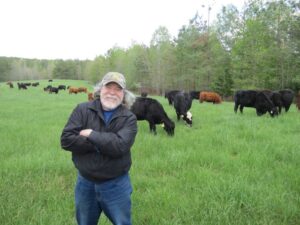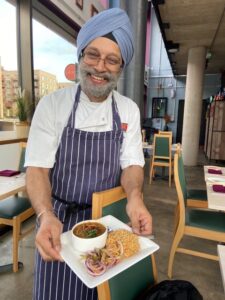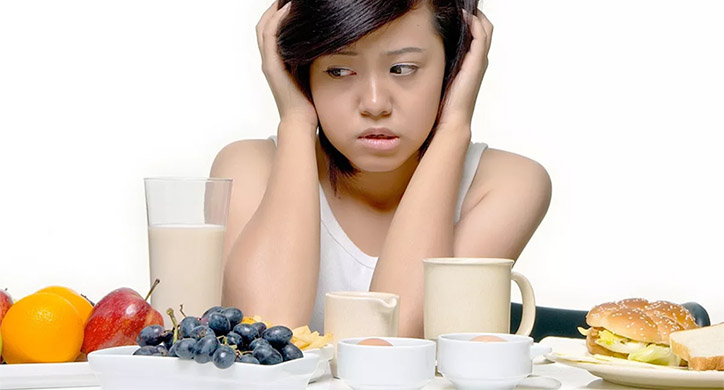SPOILER ALERT: Your food is safe. We have one of the safest food systems in the world. In fact, we’re here updating and reposting this from several years ago with the continued, glowing outlook of our system.
Unfortunately, the news cycle hasn’t changed much either…some might say it’s gotten worse. Just turn on any screen and get ready for a barrage of fear. It’s nearly impossible to escape the constant avalanche of reports targeting a threat or cause for worry.
And if I don’t already fear the food, some people want me to feel guilty for not just what I eat, but almost for even eating at all.
My So-Called Wrongdoings
Think I’m crazy? Sit down in your local diner and order a meal. Let’s go for comfort food: meatloaf, mac and cheese, and a side salad with Thousand Island dressing. Oh, and some apple pie with ice cream for dessert. A glass of ice water with lemon, and maybe a nice cup of really good coffee to cap things off.
So what have I just done here? How does this food get me into a maze of controversies about human, animal and environmental welfare?
Let’s look at it piece by piece, or bite by bite, if you prefer.
Let’s start with the meatloaf…
It’s hamburger, plus some breadcrumbs, some spices and maybe a few chunks of peppers or mushrooms. Maybe I sprinkle some salt and pepper on it, and a touch of ketchup, just for flavor.
- Should I be eating beef at all? It takes lots of water and feed grains to bring an animal to market. It gave off a lot of greenhouse gas while it fattened up, too. It may have been finished off for market confined in a feedlot, and maybe injected with antibiotics at some point. It certainly didn’t enjoy the trip to the processing plant. Dietitians tell me too much red meat will clog my arteries, or at least contribute to those extra pounds I seem to carry these days. And if I eat it more than five days a week, I might get Alzheimer’s.
- I probably didn’t need all that salt, either. It could kick up my blood pressure.
- And what was in those breadcrumbs? Were they from stale old bread they had lying around? Was it made from GMO crops? If so, should I worry?
- What about those peppers and mushrooms? How do I know they were grown responsibly, without taking up too much water, or using too much fertilizer and pesticides? And were the people who picked them paid fairly and treated well?
- Did they add an egg to the meatloaf? My mom used to do that. But if they did, was that egg from a happy, free-range chicken? Was it fed antibiotics? How much cholesterol does the egg add?
- Ketchup…organic tomatoes, or mass-produced in a hothouse or grown hydroponically in an indoor farm somewhere? Picked by whom? Were they paid fairly? And using how much added sugar? What is ascorbic acid, or citric acid anyway, and why in the world is it in there?
Now I’m afraid to even think about the mac & cheese…
- What grain did they use to make the macaroni? Is it also a GMO crop?
- Is the cheese really cheese? What kinds of preservatives, colorings, flavorings and anti-coagulants are squirming around in there, just waiting for me to eat them up?
 As for the salad…
As for the salad…
- Where in the heck did this Romaine lettuce come from? Should I worry about food poisoning?
- And what about the tomato, and the cucumber, and that reddish stuff that looks like an onion…is it local? How did it get here? How many hands have actually touched the food I’m about to eat? Who checked to make sure it’s clean, fresh and safe?
- As for the dressing, did it come out of a bottle or a 20-gallon vat somewhere?
You know, I used to love my apple pie…
Now I’m feeling a little squeamish about it!
- Who is this mysterious Mrs. Smith, and just where is this bucolic Pepperidge Farm, anyway? How do I know it wasn’t some team of minimum-wage newbies on an assembly line churning out my mass-produced pie?
- Just where did these apples come from? How much sugar is in there? Or is it high fructose corn syrup? Or maybe some alternative sweetener made from the leaves of a plant the Aztecs once used to smoke to get high? Is the crust an actual food, or maybe some form of biodegradable, flavor-enhanced cellulose?
- The ice cream isn’t really helping, either. Did the cows who supplied the milk have drugs used on them to stimulate more milk production? Were they treated humanely? How was the milk handled? How much sugar went into the mix in making this? How much artificial flavor?
Maybe a sip of water will help calm me down…
But wait a minute.
- Did this come out of the tap, or from a bottle? What kind of pipes are in the city’s water system? Who checks the water for contamination, and for what kind, and when? And are there microplastics? Will I get cancer from drinking this water?
- And what about that slice of lemon? Did anybody wash that lemon before they cut it up? How long has it been lying around waiting to be plunked into somebody’s water, or iced tea, or finger bowl? Where did it come from, anyway?
Let’s just forget about the coffee…and the sugar or artificial sweetener I put in it, or the milk. I no longer care where the coffee beans came from, or who picked them, or much of anything else. I certainly don’t care if the milk came from a cow or an almond. I don’t even want to think about how much energy was needed to cook all this, or to heat the hot water they will use to wash up.
Wasteful Worries
Now my appetite is pretty much gone, thanks to all this thinking I’ve been doing. So what do I do with all this left-over food on the plate?
- If I don’t do something with it, they will just scrape it off into the garbage and send it to the local landfill. It will decompose slowly, I suppose. But while it does, it will generate still more greenhouse gas. Food waste in landfills already accounts for 7 percent of all greenhouse gas emissions worldwide. My contribution here could pollute the water table, if the landfill isn’t up to spec. Am I more responsible for global warming if I eat this food, or if I throw it out?
- Maybe the diner will call the local food bank and make sure the left-overs go to good use – you know, for a needy person, or a soup kitchen, or something like that.
Or maybe I just stop eating.
Phew….I just woke up from my nightmare.
But this sounds ridiculous, doesn’t it?
However, this is just a superficial look at some of the issues that surround the food we eat these days.
Actually, there are a great many more than these to consider….real, serious issues that people in the food sector wrestle with every day in trying to satisfy the public demand for safe, sustainable food.
OK, Now Here’s the Good News…
Educating worried consumers on our food system is one of the big reasons why we created this blog, so you’re in luck.
People want to know more about our food system: where their food comes from, how it is produced, how it is delivered, how we keep it safe and make it as wholesome as possible, and more. We all need to know, and, frankly, we should know. And thankfully, farmers have a great story to tell.
There is no way to adequately describe the commitment, the resilience, the innovative and entrepreneurial spirit of the men and women who produce, farm, ranch, and those who manufacture the food products, and those who prepare the food we need and want.
We look forward to continued innovation and advancement in our established food system. And what we hear is loud, clear and unequivocal faith in the future of food.
“This growing fear has the potential to sideline, deter, critical technologies that we already use, and derail technologies in the pipeline, that we already know how to achieve.”
– Former U.S. Secretary of Agriculture, Sonny Perdue
Never underestimate our farmers & food producers
When commitment, capability and capital converge combine with their oversight, look out. All things are possible — including food that people don’t fear, and a food system that doesn’t induce guilt.
If you want to learn more about how our food is grown, food safety, and food waste, take a look at these posts for more information. We hope this collection of posts puts your mind at ease so you can rightfully enjoy your food produced by some of the hardest-working people in the world:
Farming and production:
- What is the Farm Bill and where is it headed?
- GMOs: a recipe for understanding
- Where does our food come from?
- What’s the difference between GMO and Bioengineered foods?
Food safety:
- Understanding food labels
- Food safety best practices at home
- CDC foodborne illness detection
- Food safety at farmers’ markets
Food waste:
- Can food packaging & global health coexist?
- FarmLink: Bridging food waste & food security
- Waste not, want not
- Eat beer and drink sandwiches
Government resources:

Maybe our food system isn’t perfect yet. We need all the intelligence and technologies possible to feed a growing population while regenerating the land.
We’re doing a better job today than we did yesterday, and we’ll do a better job tomorrow than we do today.
Indeed, it’s a great big world of possibilities — except maybe for a decent-tasting diet cola.









